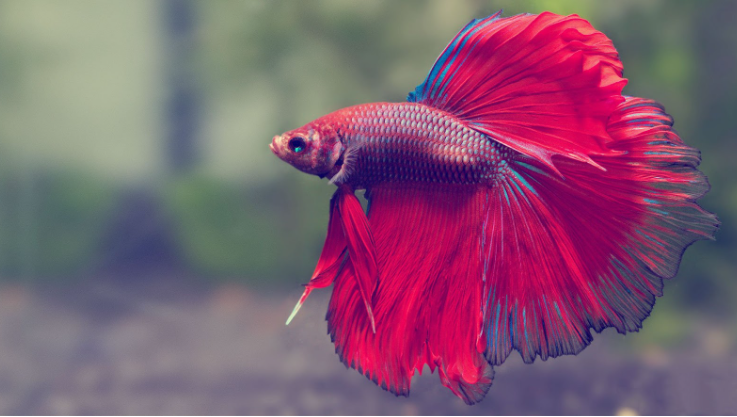Female betta fish, also known as “Betta splendens,” are captivating and beautiful aquatic creatures that have gained popularity among aquarium enthusiasts. While their male counterparts, with their long, flowing fins, often take the spotlight, female bettas are equally fascinating in their own right. In this guide, we will delve into the world of female betta fish, exploring their unique characteristics, care requirements, behavior, and how to keep them in a community tank.
The Beauty of Female Bettas
Female bettas boast a unique charm and beauty. While they may not display the elaborate fins and vibrant colors seen in male bettas, they possess their own subtle elegance. Female bettas typically have shorter fins and come in a variety of colors, from rich reds and blues to soft pastels and earthy tones. Their active and curious nature adds to their allure, making them a delightful addition to any aquarium.
The Beauty of Female Bettas
Female bettas boast a unique charm and beauty. While they may not display the elaborate fins and vibrant colors seen in male bettas, they possess their own subtle elegance. Female bettas typically have shorter fins and come in a variety of colors, from rich reds and blues to soft pastels and earthy tones. Their active and curious nature adds to their allure, making them a delightful addition to any aquarium.
Tank Size and Setup
A suitable tank for female bettas should be at least 5 gallons in size, providing ample swimming space. A well-planted tank with hiding spots, caves, and floating plants mimics their natural habitat and offers places to retreat when needed.
Water Conditions
Maintaining pristine water conditions is vital. Regularly test the water parameters, including temperature, pH levels, ammonia, nitrite, and nitrate, and ensure they are within the recommended range for bettas (temperature: 78°F to 80°F, pH: 6.5 to 7.5).
Filtration and Aeration
A reliable filtration system is necessary to keep the water clean and free from toxins. Gentle water flow is preferred to prevent stressing the fish. Aeration also ensures adequate oxygen levels for the bettas.
Nutrition
A balanced and varied diet is essential for female bettas’ health. High-quality betta pellets, supplemented with occasional treats like brine shrimp, bloodworms, or daphnia, provide the necessary nutrients.
Tank Mates
Female bettas can be kept together in groups called sororities, but it requires careful planning and observation. In a community tank, compatible tank mates include peaceful fish like neon tetras, corydoras catfish, and snails. Avoid aggressive or fin-nipping species that may harm the bettas.
Understanding Female Betta Behavior
Female bettas exhibit unique behavior patterns that distinguish them from their male counterparts. Understanding their behavior can help in providing the best care and ensuring their happiness:
Sorority Dynamics
When keeping female bettas in a sorority, it’s essential to establish a hierarchy. Some initial aggression and chasing may occur as they establish their positions, but with ample space and hiding spots, conflicts can be minimized.
Individual Personalities
Each female betta has her distinct personality. Some may be more dominant and assertive, while others may be more laid-back and peaceful. Observing their behavior will help you better understand and cater to their individual needs.
Exploring Their Environment
Female bettas are curious and active swimmers. They enjoy exploring their surroundings and interacting with plants and decorations in the tank. Providing enrichment and hiding spots enhances their well-being.
Keeping Female Bettas in a Community Tank
Keeping female bettas in a community tank can be rewarding, but it requires careful planning and consideration of their needs and tank mates:
Tank Size
A larger tank is preferable when creating a female betta sorority. With more space, bettas have room to establish territories, reducing the likelihood of aggressive encounters.
Tank Setup
A well-planted tank with plenty of hiding spots and visual barriers helps reduce aggression and provides places for bettas to retreat if needed.
Introducing Tank Mates
When introducing new female bettas or other tank mates, it’s essential to do so gradually and monitor their interactions closely. Avoid introducing all bettas simultaneously to prevent overwhelming the existing inhabitants.
Watch for Signs of Aggression
Occasional squabbles and chasing are normal as the bettas establish their hierarchy. However, if aggressive behavior becomes excessive and leads to injuries, consider removing the aggressor to restore harmony.
Enrichment and Diversion
Enrich the tank with live plants, decorations, and hiding spots to create a stimulating environment. This helps divert their attention from potential conflicts and provides outlets for their natural behaviors.
Conclusion
Female betta fish are captivating creatures that deserve recognition and appreciation for their unique beauty and charming personalities. Providing them with proper care, a suitable environment, and the option of living in a well-planned sorority or community tank allows them to thrive and exhibit their natural behaviors. Whether kept individually or in a group, female bettas are sure to captivate and bring joy to any aquarium enthusiast lucky enough to welcome them into their aquatic world.
